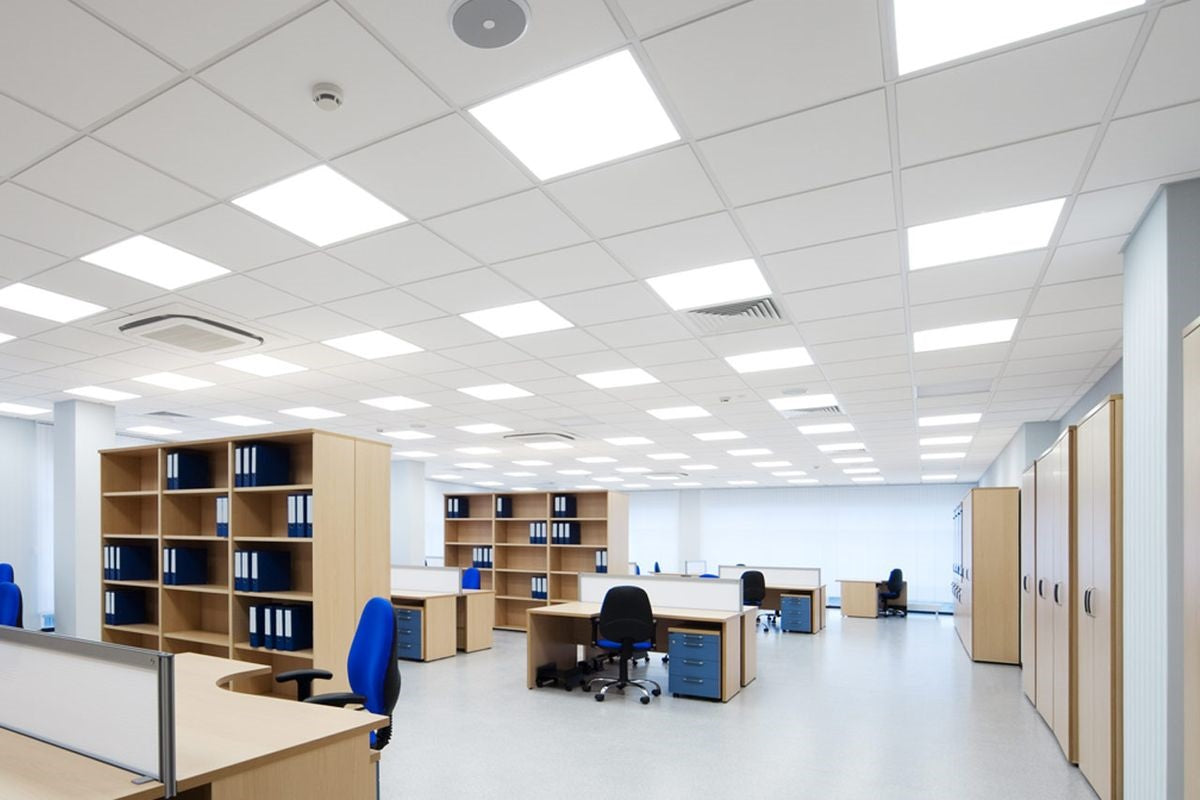I. Introduction
Panel lights, a modern lighting solution, have gained prominence across diverse settings for their sleek design and efficient illumination. As the lighting industry evolves, panel lights have emerged as a popular choice due to their versatility and energy-saving features. Understanding the various aspects of panel lights, from installation methods to customization options, is crucial for harnessing their full potential in residential, commercial, and industrial environments. Let's delve deeper into the world of panel lights to explore their impact and benefits.
II. Understanding Panel Lights
Panel lights, also known as flat panel lights, are modern lighting fixtures designed to provide uniform and glare-free illumination across various spaces. Typically, panel lights consist of a thin, flat panel housing LED light sources, a light guide plate, and a diffuser to distribute light evenly. These components work together to emit soft, diffused light that creates a comfortable and visually pleasing environment.
One of the key benefits of using panel lights is their energy efficiency. LED panel lights consume less energy than traditional lighting sources, resulting in cost savings on electricity bills. Additionally, panel lights have a long lifespan, lasting tens of thousands of hours before needing replacement. This longevity reduces maintenance costs and ensures consistent lighting performance over an extended period.
In the market, there are different types of panel lights available to cater to various lighting needs. LED light panels are a popular choice for their energy efficiency, brightness, and color options. They are versatile and can be dimmable to adjust the light intensity according to preferences. Solar light panels, powered by solar energy, offer a sustainable lighting solution for outdoor spaces where access to electricity is limited. These panels harness solar power during the day and illuminate the surroundings at night, contributing to energy savings and environmental conservation.
By understanding the structure, benefits, and types of panel lights available, individuals and businesses can make informed decisions when selecting lighting solutions for residential, commercial, or outdoor applications. Embracing panel lights not only enhances the visual appeal of spaces but also promotes energy efficiency and sustainability in lighting practices.
III. Practical Tips for Panel Light Usage
How to Turn Off Green Light on Vivint Panel
To turn off the green light on a Vivint panel, follow these step-by-step instructions:
- Locate the Vivint panel in your home or office where the green light is visible.
- Look for the power button or control panel on the Vivint device.
- Press and hold the power button for a few seconds until the green light indicator turns off.
- Release the power button once the green light is no longer illuminated.
- Verify that the green light has been successfully turned off by checking the panel display.
Reasons to Turn Off the Green Light:
There are several reasons why someone might want to turn off the green light on a Vivint panel. One common reason is to reduce distractions or create a more ambient environment, especially in settings where bright lights are undesirable, such as bedrooms or workspaces. Turning off the green light can also help conserve energy and extend the lifespan of the panel by minimizing unnecessary power consumption. Additionally, for individuals sensitive to light or seeking a more discreet appearance for the Vivint panel, disabling the green light can contribute to a more comfortable and aesthetically pleasing environment.
By following the simple steps to turn off the green light on a Vivint panel and understanding the potential benefits of doing so, users can customize their lighting preferences and enhance their overall user experience with the device.
How to Turn Off Light on Vivint Panel
Turning Off Light on Vivint Panel:
To turn off the light on a Vivint panel, you can follow these simple steps:
- Locate the Vivint panel in your home or office where the light is located.
- Look for the settings or options button on the panel.
- Press the settings button to access the menu or display options.
- Navigate through the menu to find the option to control the panel light.
- Select the option to turn off the light on the Vivint panel.
- Confirm the selection, and the light on the panel should be turned off.
Situations Where Turning Off the Light Might Be Necessary or Preferred:
- Nighttime: Turning off the light on the Vivint panel during nighttime can help create a darker and more conducive environment for sleeping. The light may be too bright or disruptive in a dark room, affecting sleep quality.
- Home Theater: In a home theater or entertainment room, turning off the light on the Vivint panel can enhance the viewing experience by reducing distractions and creating a cinematic atmosphere.
- Security Concerns: If you prefer a more discreet appearance for security reasons, turning off the light on the Vivint panel can help maintain a low profile and prevent drawing unnecessary attention to the panel.
- Energy Conservation: By turning off the light on the Vivint panel when not in use, you can save energy and reduce electricity consumption, contributing to a more sustainable and cost-effective home environment.
- Personal Preference: Some individuals may simply prefer a darker or less illuminated space, and turning off the light on the Vivint panel allows them to customize their environment to their liking.
By understanding how to turn off the light on a Vivint panel and identifying situations where doing so might be necessary or preferred, users can optimize their lighting settings to suit their preferences and needs in different contexts.
How to Clean Solar Light Panel
Cleaning solar light panels is crucial for optimal performance and efficiency. To clean them effectively:
- Ensure panels are cool and not in direct sunlight.
- Use a mild detergent and water with a soft cloth or sponge.
- Gently scrub in a circular motion, focusing on stubborn dirt.
- Rinse thoroughly and dry with a squeegee or cloth.
Regular cleaning every 1-2 months helps maintain efficiency and longevity of solar panels.
How to Use Red Light Panel
Red light panels emit specific wavelengths for health benefits. To use:
- For skincare, cleanse skin and position panel 6-12 inches away for 10-20 minutes.
- For pain relief, place panel near the affected area and adjust intensity and duration.
- Follow manufacturer's guidelines for optimal results.
How Do You Clean a Solar Light Panel
Cleaning a solar light panel is essential for maintaining optimal performance and maximizing energy efficiency. Here are additional tips and techniques for cleaning solar light panels effectively:
- Use Distilled Water: When cleaning solar panels, consider using distilled water instead of tap water to minimize mineral deposits that can accumulate on the panels over time. This helps prevent residue buildup and ensures a thorough cleaning.
- Avoid Abrasive Materials: Refrain from using abrasive materials such as harsh chemicals, scrub brushes, or rough sponges that can scratch or damage the surface of the solar panels. Opt for soft cloths, squeegees, or gentle brushes to prevent any harm to the panels.
- Regular Maintenance: Develop a routine maintenance schedule for cleaning solar panels, ideally every 1-3 months, depending on the surrounding environment and weather conditions. Regular cleaning prevents dirt buildup and ensures optimal sunlight absorption.
- Consider Weather Conditions: Choose an appropriate time to clean solar panels when the weather is mild and the panels are not hot to the touch. Cleaning panels in direct sunlight or extreme temperatures can affect the cleaning efficiency and potentially damage the panels.
- Inspect for Damage: While cleaning, inspect the solar panels for any signs of damage, cracks, or loose connections. Address any issues promptly to maintain the functionality and longevity of the solar light system.
Common concerns and challenges related to cleaning solar light panels:
- Bird Droppings and Debris: Bird droppings and debris can be challenging to remove from solar panels. To address this, soak the affected area with water and gently scrub with a soft cloth to loosen the residue before rinsing thoroughly.
- Shade and Obstructions: Ensure that nearby trees, branches, or structures do not cast shadows on the solar panels, as shading can significantly reduce energy production. Trim foliage or adjust panel positioning to maximize sunlight exposure.
- Hard Water Stains: If mineral deposits from hard water leave stains on the solar panels, consider using a mixture of vinegar and water or a commercial solar panel cleaner to dissolve and remove the residue effectively.
By incorporating these additional tips, techniques, and addressing common concerns when cleaning solar light panels, you can enhance their performance, extend their lifespan, and optimize energy production for a sustainable and efficient solar lighting system.
IV. Exploring Additional Panel Light Features
Light Diffuser Panel:
- Purpose: Soften and scatter light for even illumination, reducing glare.
- Benefits: Reduced eye strain, enhanced aesthetics, improved light quality.
Red Light Therapy Panel:
- Concept: Uses red light wavelengths for health benefits like skin improvement and pain relief.
- Features: Specific wavelengths, skincare benefits, pain management, wound healing.
V. Conclusion
In conclusion, panel lights offer versatile solutions for lighting needs, including light diffuser panels and red light therapy panels. Proper usage, maintenance, and understanding are crucial for optimal performance. Explore the benefits of panel lights to enhance ambiance, promote well-being, and elevate your lighting experience. Experiment with different features to personalize your space and enjoy the advantages of advanced lighting technologies.

